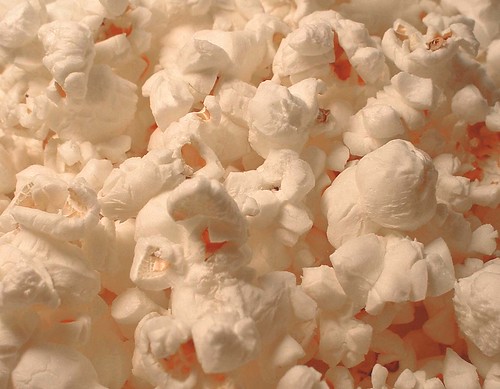
Popcorn is a beloved snack, associated with fun times and good movies. It can be popped in oil, or it can be air-popped. The difference between the two comes down to personal preference, whether that is based on calories or flavor. Each one has its pros and cons.
How Do Those Kernels Pop?
Video of the Day
A kernel of pop corn does not take into consideration whether it is in an air popper or an oil popper. What makes it pop is the same in both. Each kernel has a tiny bit of water locked inside it. When the kernel is heated to the point that the bit of water reaches 212 degrees, the starch in the corn expands and becomes a gooey substance. The pressure of the expanding goo presses against the hull until the force is so great it explodes the hull, expanding the starch and releasing the steam from that bit of water. What results is an individual piece of popcorn.
Video of the Day
Oil Popped
When oil is used to heat the corn, it is because the heat in a pan will burn the corn as it pops. The oil coats each kernel that pops and, along with shaking the pan, keeps the kernel from sticking and burning. Whether the oil is butter, olive oil or vegetable oil, it flavors the corn and provides a surface for salt, garlic or any other flavoring to adhere to, creating even more flavor. A cup of oil-popped popcorn contains 55 calories.
Air Popped
Air poppers became fashionable in the mid-1970s. Kernels are placed in a hopper that is superheated by hot air blowing across the kernels. As each kernel is popped, it is ejected from the hopper, moving other kernels to the metal surface and preventing any burning to the completed popcorn. The result tends to be a fluffier kernel. It is also quite dry, so salt or other seasoning do not stick well to it. For such seasonings to stick, butter or another oil must be poured over it. To many, this defeats the purpose of air-popped corn, which contains about 33 calories per popped cup.
Considerations
There are times when one method of popping may be more appropriate than the other. Air-popped popcorn is perfect for stringing and using on a Christmas tree. The lack of oil makes it lighter, brighter and less messy. Air-popped popcorn also is good for making popcorn balls, as all the flavor characteristics can be determined by the coating applied afterward and will not be influenced by the type of oil chosen to cook it in. On the other hand, when prepared for a party snack or movie, oil-popped popcorn will be easier to season without adding additional butter. If butter will be added despite the preparation method, air-popped will spare some of the calories.
Enjoy!
Popcorn has been around for centuries, with tales of enjoyment going back to 16th-century Aztec culture. Peruvians toasted corn in the 17th century, which would be more on the lines of air-popped corn. It was used in both of these civilizations for ceremonial dress as well.